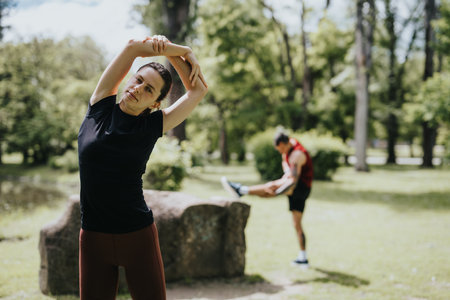Introduction to Cultural Competence in Cardiac Rehabilitation
Cardiac rehabilitation (CR) is a vital part of recovery and ongoing health for people living with heart disease. In the United States, individuals from many different cultures, backgrounds, and communities participate in CR programs. This diversity brings unique perspectives, beliefs, and needs that healthcare providers must recognize and respect. Understanding cultural competence helps ensure that every patient receives care that is respectful, effective, and tailored to their background.
What Is Cultural Competence?
Cultural competence is the ability of healthcare professionals to deliver care that meets the social, cultural, and linguistic needs of patients. It goes beyond simply knowing about different cultures; it means actively working to understand, communicate with, and care for people whose values and experiences may differ from your own. In cardiac rehabilitation, cultural competence can make a big difference in how patients respond to treatment, follow medical advice, and achieve better outcomes.
Why Is Cultural Competence Important in Cardiac Rehabilitation?
The United States is home to people from all over the world. Each group may have its own beliefs about health, exercise, diet, medication, and the role of family in decision-making. Without cultural competence, CR programs might miss opportunities to connect with patients or even unintentionally create barriers to their recovery. When providers are culturally competent, they can:
- Build trust with patients
- Improve communication
- Respect dietary or religious restrictions
- Address language barriers
- Increase participation and adherence to CR programs
Key Elements of Cultural Competence in US Cardiac Rehabilitation Programs
| Element | Description | Example |
|---|---|---|
| Language Access | Providing information in multiple languages or using interpreters | Offering Spanish-language education materials for Hispanic patients |
| Cultural Awareness Training | Educating staff about cultural norms and preferences | Learning about dietary restrictions during Ramadan or Lent |
| Family Involvement | Understanding the role of family in patient care decisions | Including family members in therapy sessions when appropriate |
| Lifestyle Considerations | Respecting traditional health practices or alternative medicine use | Discussing herbal supplements openly without judgment |
| Sensitive Communication | Avoiding stereotypes and assumptions about any group | Asking open-ended questions about beliefs regarding exercise and health |
The Impact Across the United States
Diverse communities across the US—from urban centers like Los Angeles and New York City to rural areas in the Midwest—bring a wide range of traditions and languages into cardiac rehab settings. Programs that embrace cultural competence are better equipped to support everyone’s path to heart health. By making small changes—like translating materials or inviting input from different community groups—cardiac rehabilitation teams can make a big difference in patient engagement and success.
2. Understanding the Diversity of Cardiac Patients in the US
Demographic Trends in Cardiac Patients
The United States is a melting pot of cultures, ethnicities, and languages. When it comes to cardiac rehabilitation, understanding the makeup of the patient population is key. People from different backgrounds may have unique risk factors, beliefs about health, and barriers to care. For example, the prevalence of heart disease can vary widely among groups due to genetics, lifestyle, and access to healthcare.
| Ethnic Group | Common Languages | Heart Disease Risk Factors | Potential Barriers |
|---|---|---|---|
| African American | English | High blood pressure, diabetes | Mistrust in healthcare system, lower access to care |
| Hispanic/Latino | Spanish, English | Diabetes, obesity | Language barriers, lack of insurance |
| Asian American | Mandarin, Vietnamese, Korean, English | High cholesterol, hypertension | Cultural stigma about illness, limited culturally tailored resources |
| Native American | English, Native languages | Obesity, diabetes, smoking rates | Lack of nearby rehab centers, transportation issues |
| White (Non-Hispanic) | English | Smoking, sedentary lifestyle | Poverty in rural areas, mental health stigma |
Health Disparities Among Diverse Populations
Despite advances in cardiac care, not all Americans benefit equally. Some communities experience higher rates of heart disease and face more obstacles in accessing rehabilitation. This might be due to socioeconomic status, education level, insurance coverage, or even historical mistrust in the medical system. For instance:
- African Americans: More likely to die from heart disease at a younger age compared to other groups.
- Hispanic/Latino patients: May delay seeking care due to language or immigration concerns.
- Elderly immigrants: Often face isolation and have trouble navigating complex healthcare systems.
Linguistic and Cultural Needs in Cardiac Rehab
Cultural competence means more than just translation services—it’s about respecting beliefs and traditions that impact recovery. For example:
- Diets: Traditional foods may differ from standard dietary recommendations in rehab programs.
- Family roles: In some cultures, families are deeply involved in medical decisions and care planning.
- Religious practices: Religious holidays or fasting might affect medication schedules or rehab attendance.
- Mental health: Some groups may see mental health support as a stigma rather than a resource.
The Importance of Individualized Care Plans
No two patients are the same. By recognizing each person’s unique background—language preferences, cultural beliefs about health and healing, family structure—cardiac rehab professionals can create personalized plans that build trust and improve outcomes for everyone.
![]()
3. Barriers to Access and Participation
Understanding the Challenges Faced by Diverse Populations
Cardiac rehabilitation is vital for recovery and long-term health after a heart event, but many people in the US face obstacles that make it hard to participate. These barriers can be different depending on a person’s background, culture, or life situation. Let’s look at some of the most common challenges.
Language Barriers
Not everyone in the US speaks English fluently. For patients whose primary language isn’t English, understanding medical instructions, program details, and communicating with healthcare providers can be tough. This may lead to confusion, missed appointments, or even dropping out of the program entirely.
Socioeconomic Status
Many Americans struggle with financial issues that affect their ability to attend cardiac rehab. These challenges include lacking health insurance, not being able to afford co-pays, or living far from rehab centers without reliable transportation. Work schedules and lack of paid time off also make it harder for some people to take part.
Cultural Health Beliefs
Cultural beliefs about illness and healing can influence whether someone chooses to participate in cardiac rehab. In some cultures, there may be a strong preference for home remedies over clinical programs. Others might see heart disease as a source of shame or stigma, leading them to avoid group settings or professional help.
Common Barriers by Population Group
| Population Group | Main Barrier(s) | How It Impacts Access |
|---|---|---|
| Recent Immigrants | Language, unfamiliarity with system | Difficulty navigating healthcare; may not understand available services |
| Low-Income Families | Cost, transportation, time off work | May skip sessions due to money issues or job commitments |
| Elderly Adults | Lack of mobility, limited support networks | Might need help getting to appointments; may feel isolated |
| Certain Ethnic Groups | Cultural beliefs, mistrust of healthcare system | Less likely to seek care; may prefer traditional healing methods |
The Importance of Addressing These Barriers
If these barriers aren’t addressed, many Americans will miss out on the benefits of cardiac rehabilitation. Recognizing the unique needs and backgrounds of each patient is key to providing care that truly works for everyone.
4. Strategies for Culturally Competent Care
Providing cardiac rehabilitation (CR) in the United States means working with people from many different backgrounds. Cultural competence helps ensure that everyone receives care that respects their unique beliefs, values, and needs. Here are evidence-based strategies and practical tools to deliver culturally sensitive care in CR settings.
Staff Training
Ongoing education for healthcare providers is key. Staff training programs can include:
| Training Topic | Description | Examples |
|---|---|---|
| Cultural Awareness | Understanding personal biases and learning about different cultures’ health beliefs and practices. | Workshops, guest speakers from diverse communities. |
| Communication Skills | Improving language access and non-verbal communication techniques. | Role-playing, using interpreters effectively. |
| Trauma-Informed Care | Recognizing how past trauma may impact a patient’s health behaviors. | Sensitivity training, referral pathways for additional support. |
Tailored Education Materials
Educational materials should be accessible and relevant to each patient’s cultural background. Consider these approaches:
- Language Access: Offer handouts, videos, or apps in multiple languages common in your area, such as Spanish, Chinese, or Vietnamese.
- Visual Aids: Use images and diagrams that reflect the diversity of your patient population.
- Culturally Relevant Examples: Adapt dietary advice to include foods familiar to specific groups (for example, including traditional Latino or Asian meals in heart-healthy recipes).
Community Engagement
Building partnerships with local organizations helps bridge gaps between clinical care and everyday life. Strategies include:
- Collaborating with Community Leaders: Work with faith leaders, neighborhood organizations, or cultural associations to build trust and share health information in ways that resonate locally.
- Hosting Outreach Events: Organize free screenings or educational workshops at community centers or places of worship.
- Peer Support Groups: Create groups where patients from similar backgrounds can share experiences and encourage each other through recovery.
Practical Tools for Cardiac Rehab Teams
| Tool/Resource | Description | How It Helps |
|---|---|---|
| Bilingual Staff or Interpreters | Hiring staff who speak commonly used languages or providing professional interpreters during appointments. | Makes communication clear and respectful, reducing misunderstandings. |
| Cultural Assessment Checklists | A simple questionnaire about patient preferences, beliefs, and traditions. | Tailors care plans to individual needs and avoids assumptions. |
| Culturally Adapted Exercise Plans | Physical activity options that fit within cultural norms (e.g., group walking clubs for older adults). | Makes rehab activities more appealing and sustainable long-term. |
The Bottom Line on Culturally Competent Cardiac Rehab Care
Culturally competent care isn’t just about translation—it’s about understanding what matters most to each person and making sure that care is truly patient-centered. By training staff, adapting materials, and working closely with communities, cardiac rehab programs can help every patient feel welcomed, understood, and supported on their journey to better heart health.
5. Building Inclusive and Equitable Cardiac Rehabilitation Programs
Understanding the Need for Cultural Competence
In the United States, people from different backgrounds experience heart disease in unique ways. Factors like language, beliefs, traditions, and social support can all impact how patients engage with cardiac rehabilitation. Creating inclusive programs means recognizing these differences and making sure everyone gets the care they need.
Recommendations for Designing Inclusive Rehab Services
1. Assess Community Needs
Start by understanding the community you serve. This includes learning about common languages spoken, religious or cultural practices, and any barriers to healthcare access. Surveys and conversations with local organizations can help gather this information.
2. Offer Culturally Adapted Education Materials
Provide educational resources in multiple languages and use visuals that reflect the diversity of your patients. Make sure materials are easy to understand and culturally relevant.
| Resource Type | Adaptation Example |
|---|---|
| Dietary Guidelines | Include culturally familiar foods and recipes |
| Exercise Instructions | Use images of people from various backgrounds |
| Medication Info Sheets | Translate into main community languages |
3. Train Staff in Cultural Humility
All staff members should receive training on cultural competence, including how to recognize personal biases and communicate respectfully across cultures. Ongoing education helps teams provide better support for every patient.
4. Improve Access and Flexibility
Consider practical barriers such as transportation, work schedules, and family responsibilities. Offering flexible program times, virtual sessions, or providing childcare during appointments can help more people participate.
5. Involve Family and Community Supports
Many patients rely on family or community networks for encouragement. Invite family members to join education sessions or group activities when possible. Partner with local organizations that already have trust within diverse communities.
6. Monitor Outcomes by Demographic Group
Collect data on participation and outcomes based on race, ethnicity, language, age, gender, and other factors. Use this information to identify gaps or disparities so you can adjust services as needed.
| Demographic Group | Participation Rate (%) | Main Barriers Identified |
|---|---|---|
| Latinx/Hispanic | 62% | Language, transportation |
| African American | 55% | Mistrust, lack of awareness |
| Asian American | 48% | Cultural beliefs about exercise/illness |
| Elderly (>65 years) | 70% | Mobility issues, isolation |
The Impact of Inclusive Practices in Cardiac Rehab
Culturally competent cardiac rehab programs help reduce health disparities by ensuring that everyone—regardless of their background—can access effective care. By listening to community needs and adapting services accordingly, programs can improve patient engagement, satisfaction, and overall heart health outcomes.


